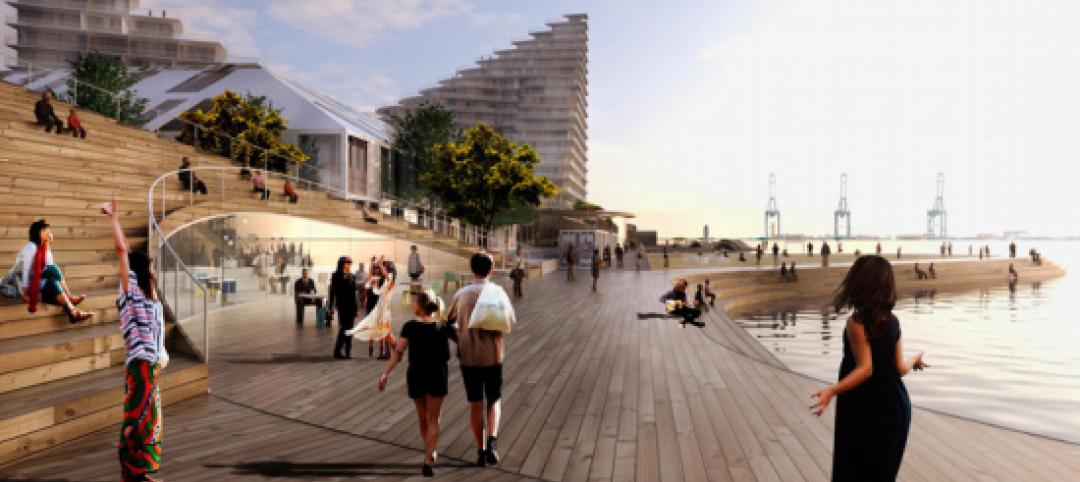Enclosed malls may be on the way out, but their structures aren’t going anywhere. A new report from The Atlantic details how creative developers are turning malls that were once filled with shoppers into medical centers, elementary schools, colleges, and churches.
The report cites research by architect and Georgia Tech professor Ellen Dunham-Jones which shows that approximately one-third of the country’s 1,200 enclosed malls are “dead or dying” due to the overbuilding done by developers in the 20th century.
The good news is that a sizable portion of that building stock is being repurposed. According to Dunham-Jones, who maintains a database of mall retrofit projects across the country, there are 211 enclosed malls currently being retrofitted in some form or fashion, reports The Atlantic.
One of those projects is the Highland Mall in Austin, Texas, where developers transformed the structure into a mixed-use community education center after it was purchased by Austin Community College. Now, with the help of Barnes Gromatzky Kosarek Architects, the once derelict mall is a thriving operation, with 604 computer stations, 200,000 sf of instructional space, a library, and offices.
In September 2014, BD+C reported on one of the nation’s most successful mall conversion projects, the Vanderbilt Medical Center at One Hundred Oaks Mall, which transformed a former 1960s-era indoor shopping mall in Nashville, Tenn., into a 880,000-sf, mixed-use medical office center for Vanderbilt University.
Related Stories
| Oct 27, 2014
Report estimates 1.2 million people experience LEED-certified retail centers daily
The "LEED In Motion: Retail" report includes USGBC’s conceptualization of the future of retail, emphasizing the economic and social benefit of green building for retailers of all sizes and types.
| Oct 16, 2014
Perkins+Will white paper examines alternatives to flame retardant building materials
The white paper includes a list of 193 flame retardants, including 29 discovered in building and household products, 50 found in the indoor environment, and 33 in human blood, milk, and tissues.
| Oct 15, 2014
Harvard launches ‘design-centric’ center for green buildings and cities
The impetus behind Harvard's Center for Green Buildings and Cities is what the design school’s dean, Mohsen Mostafavi, describes as a “rapidly urbanizing global economy,” in which cities are building new structures “on a massive scale.”
| Oct 12, 2014
AIA 2030 commitment: Five years on, are we any closer to net-zero?
This year marks the fifth anniversary of the American Institute of Architects’ effort to have architecture firms voluntarily pledge net-zero energy design for all their buildings by 2030.
| Sep 25, 2014
Bjarke Ingels headed home for latest project: Aarhus Island
Aarhus Island will be a waterside development in Denmark's second-largest city. The mixed-use development will implement Ingels' signature angled look in its residential towers.
| Sep 24, 2014
Architecture billings see continued strength, led by institutional sector
On the heels of recording its strongest pace of growth since 2007, there continues to be an increasing level of demand for design services signaled in the latest Architecture Billings Index.
| Sep 22, 2014
4 keys to effective post-occupancy evaluations
Perkins+Will's Janice Barnes covers the four steps that designers should take to create POEs that provide design direction and measure design effectiveness.
| Sep 22, 2014
Sound selections: 12 great choices for ceilings and acoustical walls
From metal mesh panels to concealed-suspension ceilings, here's our roundup of the latest acoustical ceiling and wall products.
| Sep 15, 2014
Ranked: Top international AEC firms [2014 Giants 300 Report]
Parsons Brinckerhoff, Gensler, and Jacobs top BD+C's rankings of U.S.-based design and construction firms with the most revenue from international projects, as reported in the 2014 Giants 300 Report.
| Sep 9, 2014
Using Facebook to transform workplace design
As part of our ongoing studies of how building design influences human behavior in today’s social media-driven world, HOK’s workplace strategists had an idea: Leverage the power of social media to collect data about how people feel about their workplaces and the type of spaces they need to succeed.















